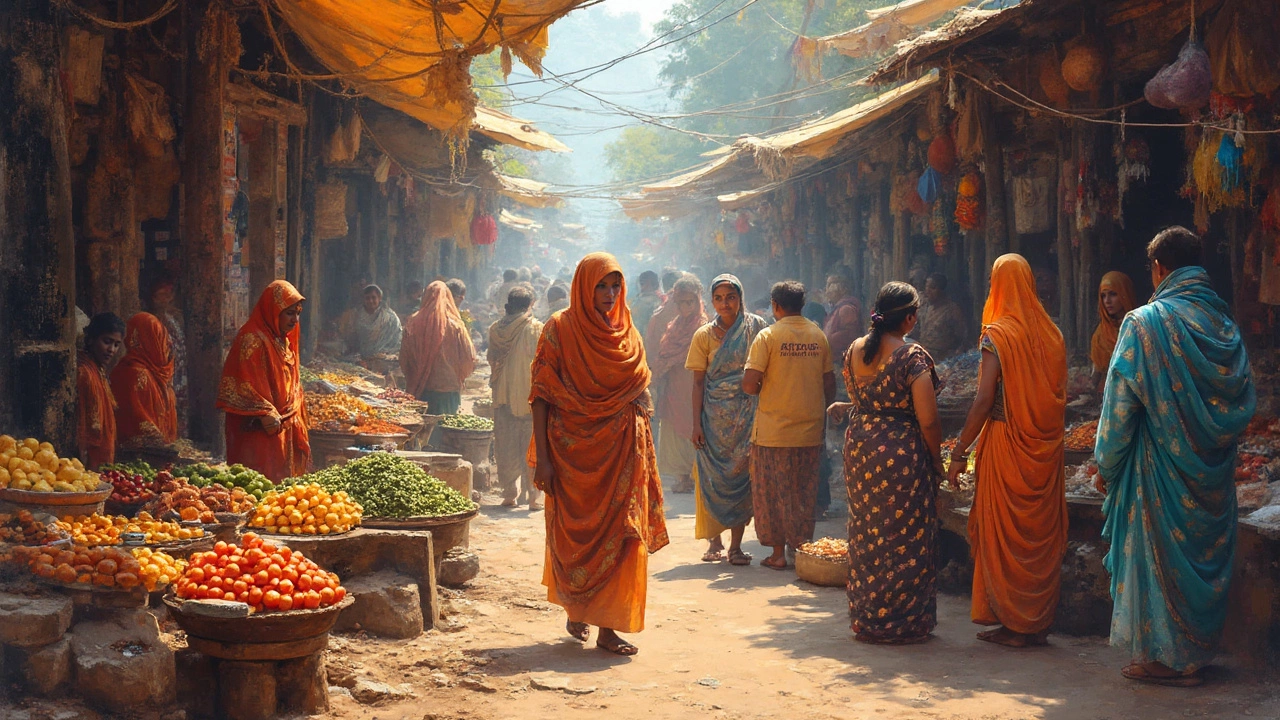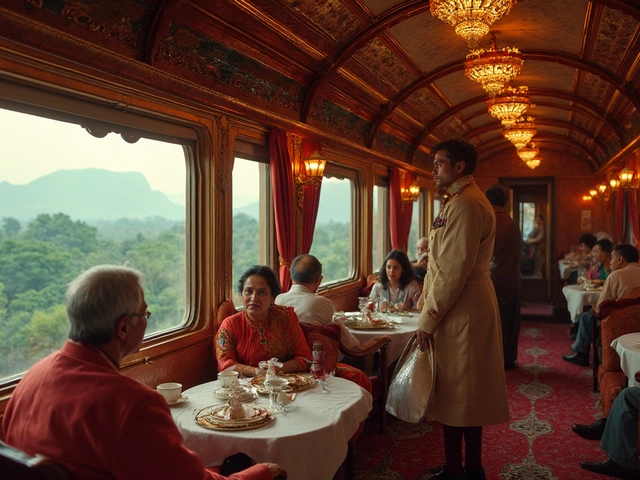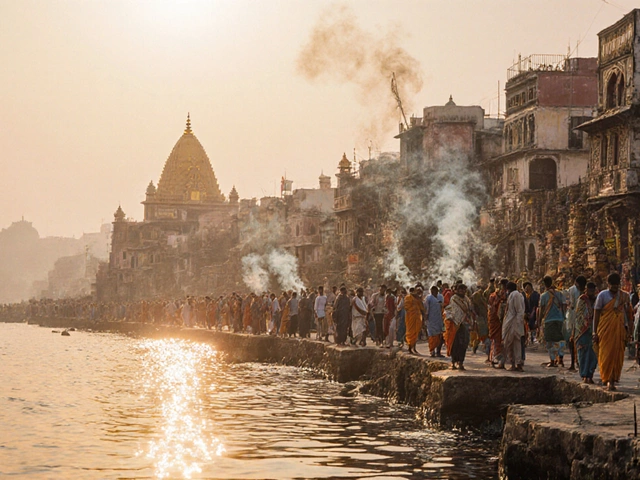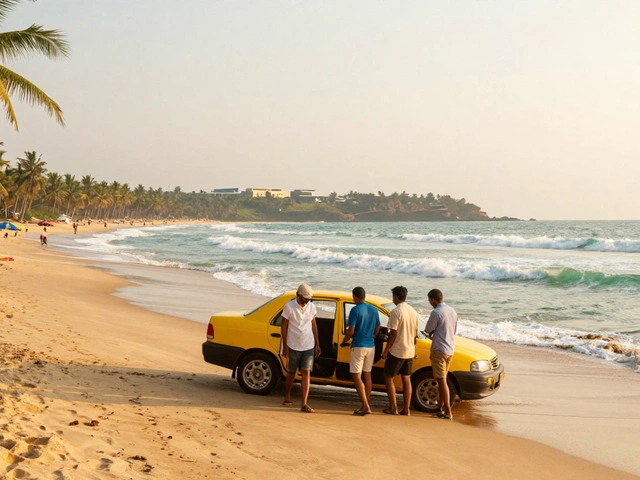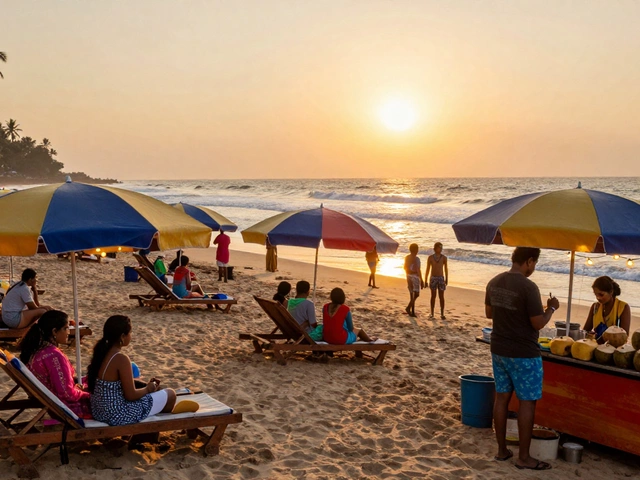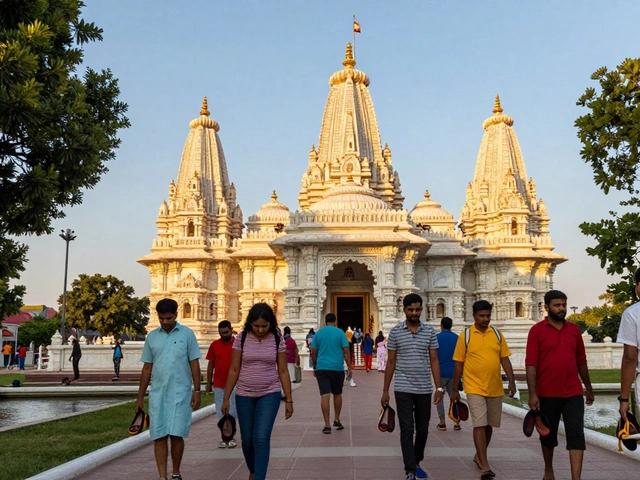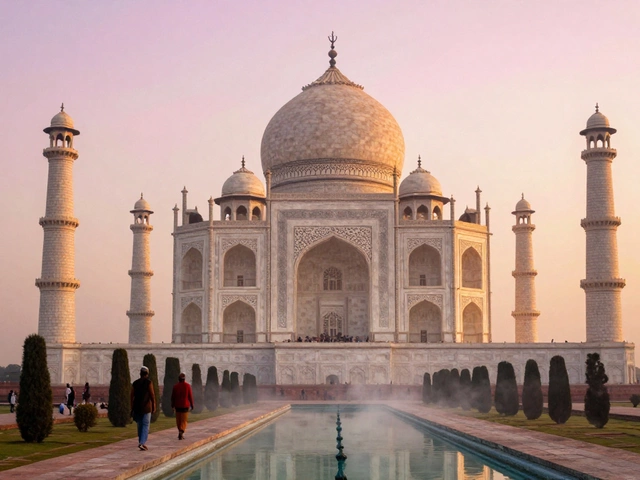When we talk about being 'Indian', it might get a tad confusing. Is it about the ethnic roots, or is it strictly the passport that one holds? Let’s untangle this together. You see, India is a kaleidoscope of cultures, languages, and traditions that can't be boxed into a single definition.
First off, let’s look at it from an ethnic viewpoint. India is home to more ethnic groups than you might care to imagine. There are over two thousand different ethnic groups spread across its vast terrain. Each has its own language, food, dance forms, and even its own festivals that are worth experiencing first-hand.
- Understanding Ethnicity vs. Nationality
- India's Ethnic Diversity
- Defining Indian Nationality
- Cultural Experiences for Travelers
- Practical Tips for Identifying as Indian
- How Tourists Can Appreciate Indian Culture
Understanding Ethnicity vs. Nationality
Alright, so here’s where it gets interesting. The terms 'ethnicity' and 'nationality' can feel like twins, but they’re not quite the same thing. When we talk about ethnicity, we’re diving into the cultural aspects like heritage, language, and sometimes religion. Ethnicity is about the cultural fabric you come from, which is way more than just your place of birth.
On the flip side, nationality is more like a legal badge. It's all about the country you belong to, the passport you hold, and the citizenship rights you enjoy. So, in the case of India, someone can be ethnically Indian with roots in Tamil, Punjabi, or Bengali cultures, but nationality might link them legally to India if that’s where they are a citizen.
What makes India such a complex and fascinating country is how these two things often crisscross. While the Indian nationality is a unifying force, the ethnic diversity is what makes exploring India such an adventure. Imagine navigating through a country with over 19,500 spoken dialects and dozens of cultural festivals happening throughout the year. That’s India for you!
For travelers looking to truly experience Indian culture, understanding this distinction can open up doors to more authentic experiences. Instead of just seeing the big landmarks, try exploring local neighborhoods, attending regional festivals, and engaging with communities to get a taste of different ethnic traditions.
India's Ethnic Diversity
When we talk about Indian ethnicity, it's like opening up a massive box of colorful LEGO blocks—each piece different but fitting into the larger picture. India’s ethnic landscape is vibrant and complex, shaped by centuries of migrations, invasions, and cultural mingling. The country’s diverse ethnic roots reflect its varied history and geography.
One remarkable aspect is the sheer number of recognized ethnic groups. There's a whopping figure of over 2,000 distinct ethnic communities. Imagine each group with its own unique traditions, languages, and cultural practices—pretty mind-blowing, right?
The major ethnic groups in India include the Indo-Aryans who primarily inhabit the northern part, the Dravidians dominant in the south, and the Tibeto-Burmans nestled in the northeastern states. Each of these groups brings its own flavor to India's cultural mix.
It gets even more fascinating when you consider the indigenous 'Adivasi' tribes. Found in central parts of the country and the northeastern forests, these communities have lifestyles that differ vastly from mainstream Indian culture. They often speak dialects unique to their own colorful history.
Here's a useful snippet: India doesn’t have a one-size-fits-all culture. This means that when you travel from one state to another, you’re in for a cultural treat as different as chalk and cheese!
Check out this quick idea of the population share according to ethnic groups:
| Ethnic Group | Approximate Population Share |
|---|---|
| Indo-Aryans | 72% |
| Dravidians | 25% |
| Others (including Tibeto-Burman and Adivasi) | 3% |
With such diversity, traveling through India is like time-traveling through centuries. Every festival, like Diwali or Pongal, reveals tales from ancient times. So next time you're wandering Indian streets, remember you’re not just seeing one culture but a whole universe put together!
Defining Indian Nationality
So, what does it mean to have an Indian nationality? Basically, it's all about legal citizenship. If you're a citizen of India, you've got the nationality part nailed down. This is defined by the Constitution of India, which outlines that anyone born in India, with parents who are Indian citizens, or who has been an ordinary resident for a certain period, typically qualifies.
India's nationality isn't just a straightforward concept, though, thanks to its historical complexities. Post-1947, when India gained independence, the country introduced laws to clarify nationality. If that sounds a bit too formal, don't worry. What really counts here is that the Indian government acknowledges three types of citizenship: by birth, descent, and registration.
Let’s break this down a bit. Being Indian by birth is pretty direct—you're born on Indian soil, boom, you're Indian. Now, Indian citizenship by descent? That kicks in if you’re born abroad to Indian parents. Want more flexibility? There's the registration path for those with some Indian ancestry or close ties wanting to formalize their citizenship.
Interestingly, India doesn't allow dual citizenship. Once you pick an Indian passport, it’s goodbye to any other nationality. This is a biggie for those maintaining ties across borders. But here’s the catch—NRI (Non-Resident Indian) status and PIO (Person of Indian Origin) cards offer some privileges to Indian nationals living abroad.
So, is all this making sense as to why Indian nationality is such a neat yet sometimes tangled aspect? The key takeaway is that while Indian nationality is about legal citizenship, it sways into the cultural realm, intertwining with a sense of belonging to a rich, diverse community.
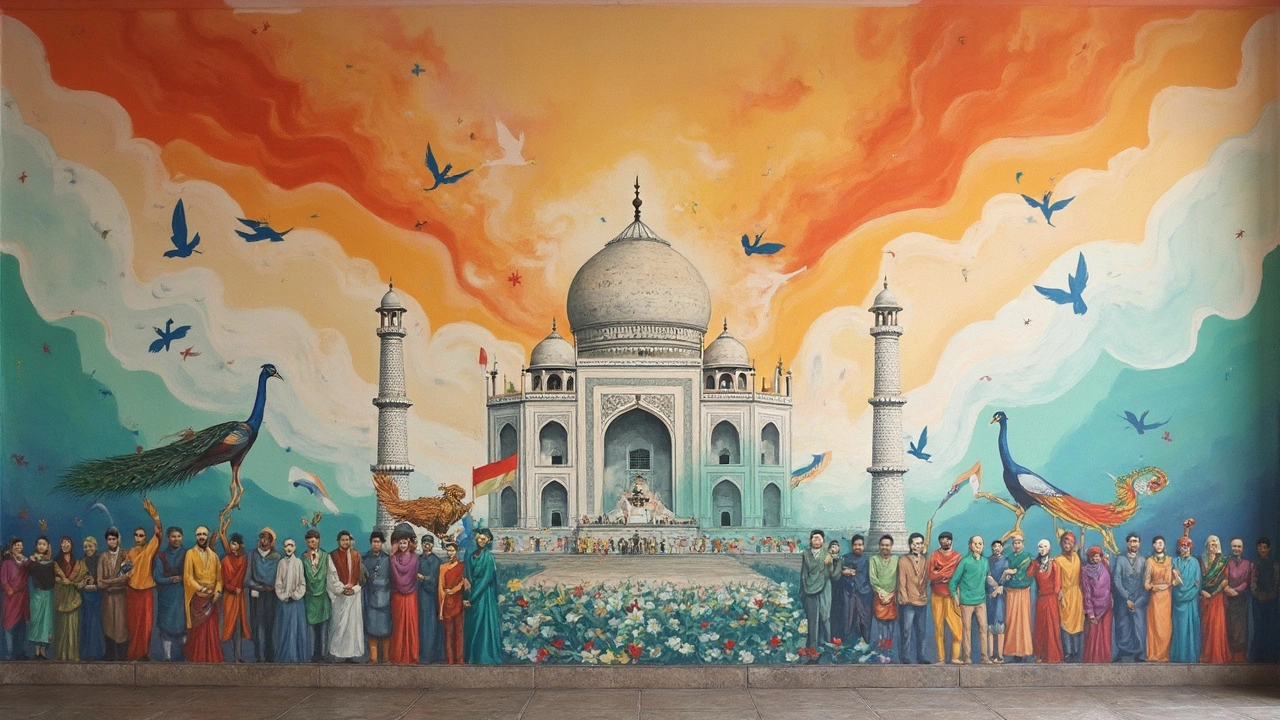
Cultural Experiences for Travelers
If you're planning a trip to India, you're in for a cultural fiesta. From colorful festivals to mouth-watering street food, there's so much to dive into. But where should you start?
First, let’s talk about the festivals. India’s festival calendar is packed all year long. You don’t want to miss Diwali, the festival of lights, which turns cities into twinkling wonderlands. Or perhaps you're curious about Holi, the festival of colors, where everyone paints the town—literally—in vibrant hues. These festivals provide unforgettable glimpses into Indian nationality through celebration.
Next, let's chat about food. Food stalls and markets are a great way to savor local flavors without hitting up fancy restaurants. Imagine biting into a crispy dosa drizzled with spicy chutney in a bustling Chennai street, or savoring hot momos in the chilled air of a Leh evening.
Feeling adventurous? Try joining a local cooking class. You’ll walk away with some new skills and an authentic taste of India, quite literally, in your hands. It’s one thing to taste Indian food—it’s another to learn how it’s made.
For those eager to dive deeper, checking out local art forms can be a real treat. Attend a Kathakali performance in Kerala for some rich storytelling through dance, or watch a traditional Rajasthani puppet show. Both are unique chances to see different aspects of Indian ethnicity come alive.
No matter how you choose to experience it, immersing yourself in the cultural tapestry of India is rewarding. You get to see firsthand how diverse groups contribute to this vast and vibrant nation. Plus, bringing back stories that you personally experienced? That's priceless.
Practical Tips for Identifying as Indian
So, you’re interested in what makes someone truly Indian? Whether it's about self-understanding or appreciation as a visitor, here are some straightforward tips:
- Explore Regional Diets: Each Indian region has its unique culinary identity. If you’re from Punjab, you might find yourself loving buttery parathas and lassis. Down south in Tamil Nadu, dosa and sambhar might be your go-to comfort foods. Immersing yourself in local food cultures is an easy way to feel connected.
- Learn a Local Language: Hindi might be the most widely spoken, but with 22 official languages across the country, picking up phrases from any regional dialect can deepen your connection to your Indian nationality. It’s a great way to show respect and appreciation.
- Celebrate Diverse Festivals: The Indian calendar is packed with festivities year-round. Holi, Diwali, Eid, and Christmas are celebrated with equal fervor. Participating in these events can connect you with both ethnic and national aspects of being Indian.
- Understand Indian History: Familiarize yourself with India's rich history and the stories of diverse communities that shaped the nation. Knowing about the freedom struggle or the ancient civilizations enhances your sense of identity.
- Follow Local Customs: Indian culture is vibrant and deeply rooted in traditions, whether that's touching elders’ feet for blessings or removing shoes before entering homes. Respecting and practicing these customs can make you feel part of the larger Indian fabric.
If you’re traveling, these practices not only help in understanding what being Indian really means but also enhance your cultural tourism experience in India. Remember, whether it’s through ethnicity or nationality, embodying Indian identity is all about embracing its diversity and richness.
How Tourists Can Appreciate Indian Culture
Diving into the depths of Indian culture is a thrilling experience for any tourist. One of the most effective ways to truly 'get' what being Indian is all about is by experiencing it firsthand. Here’s how you can do just that!
Start with the food. Indian cuisine is as diverse as it comes. Don’t just stick to the staples like butter chicken or naan. Try regional dishes like dhokla in Gujarat or fish curry in Kerala. Your taste buds will thank you.
Attending festivals is another brilliant way to soak in the culture. Diwali, the festival of lights, and Holi, the festival of colors, are celebrated with incredible pomp and show throughout the country. Each festival offers a different glimpse into various facets of Indian traditions.
Why not learn a bit of the local language while you're at it? Hindi is widely spoken, but languages like Bengali, Tamil, or Marathi can be a great way to connect with the locals and enrich your travel experience.
Here’s something you may not have thought of: explore the religious side. Visit temples, mosques, and churches. India is secular, meaning multiple religions coexist harmoniously. By understanding diverse religious practices, you’ll gain a deeper appreciation of what truly shapes the Indian ethos.
- Participate in cooking classes to master a few Indian recipes.
- Join a dance class to learn Bollywood moves or classical dance forms like Bharatanatyam or Kathak.
- Visit local markets instead of shopping malls to explore handicrafts and traditional attires.
Getting involved in community tours can also enhance your understanding of Indian culture. Some NGOs and local organizations run tours that give you insights into rural life, which contrasts with the bustling city vibe.
Remember, it's not just about seeing; it’s about experiencing. Engage in conversations with locals, and you'll find them willing to share tales and tidbits about their lives. This personal touch can make all the difference in how you perceive India.
